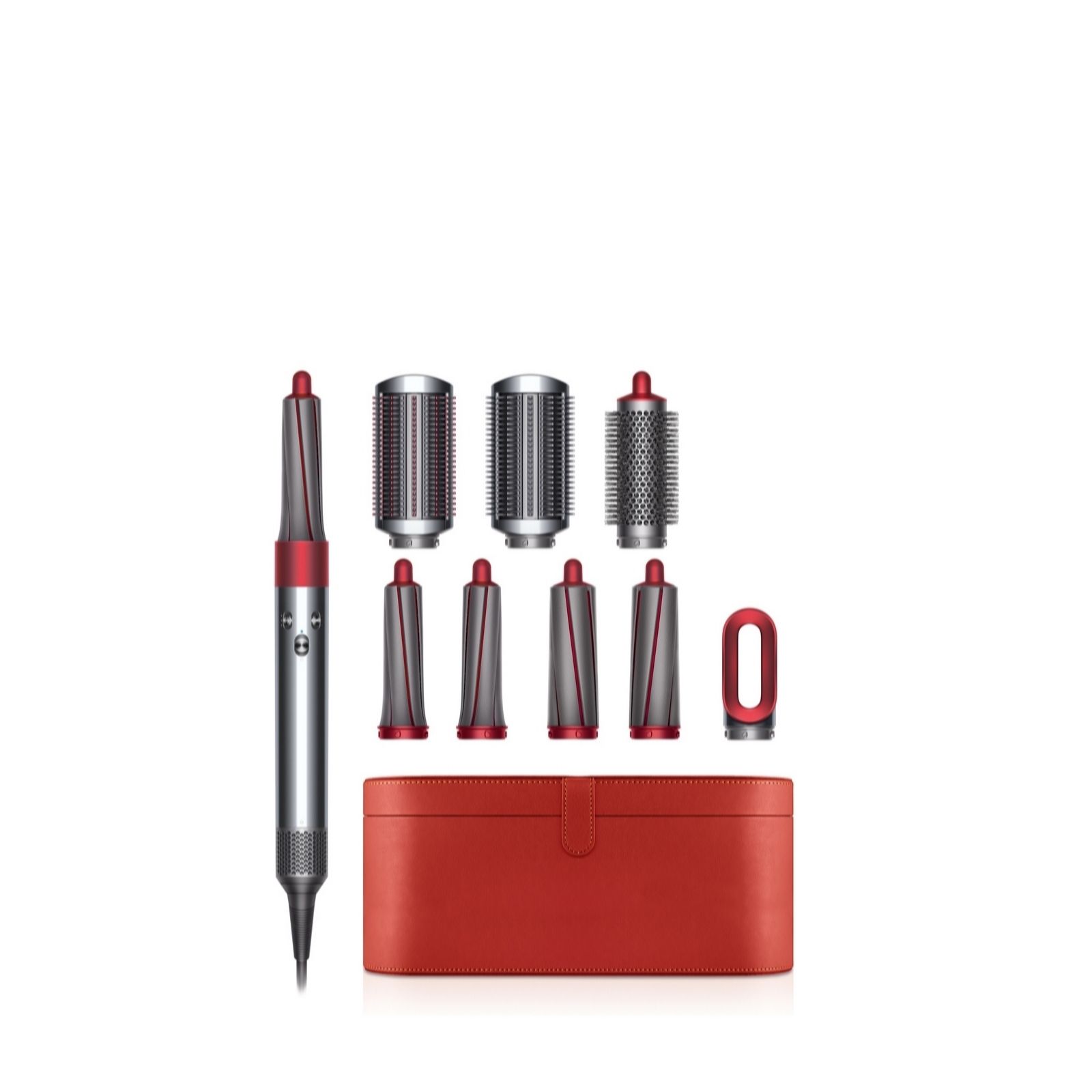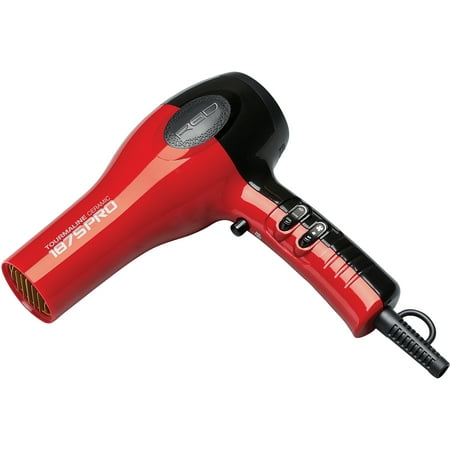The innovative and exciting Red Dyson Airwrap Complete collection helps to curl, wave, smooth and dry your hair unlike any other styling tool, utilising decades of engineering and scientific expertise to help you achieve gorgeous looks without exposing hair to extreme heat. Whether you want to create a smooth and sleek look, or go for something more voluminous and curled, this collection enables you to do it all.
The science behind it – the Coanda effect is an aerodynamic phenomenon that occurs when air, propelled at the right speed and pressure, naturally follows an adjacent surface, drawing in surrounding air. The Dyson Airwrap styler creates a spinning vortex of air around the attachment that gently attracts, wraps and curls hair. There’s no awkward clamping, gloves or winding mechanisms, just a gorgeous end result.
Always in control – the intelligent heat control system measures the air temperature over 40 times a second to ensure the heat is always at the optimum level, under 150C, to prevent extreme heat damage.
Powerful engineering – the Airwrap styler is powered by the Dyson digital motor V9. Spinning at up to 110,000rpm, generating 3.2kPa, it’s powerful enough to produce the air pressure needed to create the Coanda effect.
Cut down on styling time – engineered to style your hair from damp, simply use the pre-styling dryer to get your hair roughly 80% dry, then choose your attachment to get your desired look. By combining the water in your hair with powerful airflow and controlled heat, it can style and dry simultaneously to save time, with no extreme heat.
Stylish storage – developed by James Dyson, the storage case protects and neatly stores your Dyson Airwrap styler and its attachments. In a sleek tan colour, it’s cushioned with soft fabric and secured by a magnetic clasp.
Dyson’s two year guarantee – Dyson offers a full two year guarantee for parts, labour and transport. If there’s a problem with your Dyson machine, a Dyson Field Service Engineer will arrange to visit your home or workplace so they can fix your machine when it’s convenient.
Simply register your guarantee with Dyson in one of three easy ways:
- Online through the Dyson website www.dyson.co.uk/register or www.dyson.ie/register
- By phone Monday to Friday 8am – 8pm and Saturday and Sunday 8am – 6pm UK 0800 298 0298 or ROI 01 475 7109
- By post – complete and return the form supplied in the box (envelope provided)
Attachments explained:
- Pre-styling dryer takes hair from wet to damp, ready for styling
- 30mm Airwrap barrels create and set voluminous curls, with clockwise and anti-clockwise barrels for symmetrical curls
- 40mm Airwrap barrels create and set loose curls or waves, with clockwise and anti-clockwise barrels
- Firm smoothing brush creates a straighter style with less frizz and fewer flyaways. With firm bristles engineered to control unruly, frizz-prone hair
- Soft smoothing brush creates a smooth, blow-dry finish, with soft bristles engineered to be gentle on the scalp
- Round volumising brush directs air into the hair to give body, and the bristles create tension to shape hair as it dries. Ideal for limp, flat hair
What’s in the box?
- 1 x Red Airwrap base
- 1 x pre-styling dryer attachment
- 1 x clockwise 30mm Airwrap barrel attachment
- 1 x anti-clockwise 30mm Airwrap barrel attachment
- 1 x clockwise 40mm Airwrap barrel attachment
- 1 x anti-clockwise 40mm Airwrap barrel attachment
- 1 x firm smoothing brush attachment
- 1 x soft smoothing brush attachment
- 1 x round volumising brush attachment
- 1 x Filter cleaning brush
- 1 x Dyson-designed presentation case






by Jennifer
This was the best Christmas present ever! Love the way my hair feels when I use this. My hair feels so soft and light and smooth, just like when the hairdresser blow dries it. Seems easy to use but need a bit of practice to achieve the best results. Expensive but worth it. Good follow up from Dyson too.
by Debbie
I recently bought my 2nd air wrap as I live 6 months in uk and Spain. My new one came with 2 sizes of barrels. Much prefer the larger ones. From wet hair to styled in 10 minutes amazing
by Laverne
I’ve worked in the hair industry for over 10 years, tried many different tools/brands. This is by far the best! It does take a little time to get used to using the curl barrels but once you get the hang of it it’s great. My hair feels a lot healthier as it doesn’t have excessive heat, just enough to dry my hair and fast. I have naturally curly 3B texture hair. This is great when I want a salon blow-out look. I loved the quality so much I got the Supersonic for the diffuser when I want to wear my hair in natural curly style. I tested the Coralle straighteners at the demo store and it’s already on my birthday list this year! I can imagine with this quality they’ll be well loved for many years to come so worth the investment.
by Fatima
I bought mine in December and since then I’ve been using it everytime I wash my hair.. I haven’t used my straighteners for over 5 weeks because I’m obsessed with my airwrap!
by Claire
I have had many curling items over the years and never got on with them like my dyson I can blow dry and curl my hair with 40min where it use to take me 2hr to do.